Chrysler 2007 Annual Report Download - page 292
Download and view the complete annual report
Please find page 292 of the 2007 Chrysler annual report below. You can navigate through the pages in the report by either clicking on the pages listed below, or by using the keyword search tool below to find specific information within the annual report.-
 1
1 -
 2
2 -
 3
3 -
 4
4 -
 5
5 -
 6
6 -
 7
7 -
 8
8 -
 9
9 -
 10
10 -
 11
11 -
 12
12 -
 13
13 -
 14
14 -
 15
15 -
 16
16 -
 17
17 -
 18
18 -
 19
19 -
 20
20 -
 21
21 -
 22
22 -
 23
23 -
 24
24 -
 25
25 -
 26
26 -
 27
27 -
 28
28 -
 29
29 -
 30
30 -
 31
31 -
 32
32 -
 33
33 -
 34
34 -
 35
35 -
 36
36 -
 37
37 -
 38
38 -
 39
39 -
 40
40 -
 41
41 -
 42
42 -
 43
43 -
 44
44 -
 45
45 -
 46
46 -
 47
47 -
 48
48 -
 49
49 -
 50
50 -
 51
51 -
 52
52 -
 53
53 -
 54
54 -
 55
55 -
 56
56 -
 57
57 -
 58
58 -
 59
59 -
 60
60 -
 61
61 -
 62
62 -
 63
63 -
 64
64 -
 65
65 -
 66
66 -
 67
67 -
 68
68 -
 69
69 -
 70
70 -
 71
71 -
 72
72 -
 73
73 -
 74
74 -
 75
75 -
 76
76 -
 77
77 -
 78
78 -
 79
79 -
 80
80 -
 81
81 -
 82
82 -
 83
83 -
 84
84 -
 85
85 -
 86
86 -
 87
87 -
 88
88 -
 89
89 -
 90
90 -
 91
91 -
 92
92 -
 93
93 -
 94
94 -
 95
95 -
 96
96 -
 97
97 -
 98
98 -
 99
99 -
 100
100 -
 101
101 -
 102
102 -
 103
103 -
 104
104 -
 105
105 -
 106
106 -
 107
107 -
 108
108 -
 109
109 -
 110
110 -
 111
111 -
 112
112 -
 113
113 -
 114
114 -
 115
115 -
 116
116 -
 117
117 -
 118
118 -
 119
119 -
 120
120 -
 121
121 -
 122
122 -
 123
123 -
 124
124 -
 125
125 -
 126
126 -
 127
127 -
 128
128 -
 129
129 -
 130
130 -
 131
131 -
 132
132 -
 133
133 -
 134
134 -
 135
135 -
 136
136 -
 137
137 -
 138
138 -
 139
139 -
 140
140 -
 141
141 -
 142
142 -
 143
143 -
 144
144 -
 145
145 -
 146
146 -
 147
147 -
 148
148 -
 149
149 -
 150
150 -
 151
151 -
 152
152 -
 153
153 -
 154
154 -
 155
155 -
 156
156 -
 157
157 -
 158
158 -
 159
159 -
 160
160 -
 161
161 -
 162
162 -
 163
163 -
 164
164 -
 165
165 -
 166
166 -
 167
167 -
 168
168 -
 169
169 -
 170
170 -
 171
171 -
 172
172 -
 173
173 -
 174
174 -
 175
175 -
 176
176 -
 177
177 -
 178
178 -
 179
179 -
 180
180 -
 181
181 -
 182
182 -
 183
183 -
 184
184 -
 185
185 -
 186
186 -
 187
187 -
 188
188 -
 189
189 -
 190
190 -
 191
191 -
 192
192 -
 193
193 -
 194
194 -
 195
195 -
 196
196 -
 197
197 -
 198
198 -
 199
199 -
 200
200 -
 201
201 -
 202
202 -
 203
203 -
 204
204 -
 205
205 -
 206
206 -
 207
207 -
 208
208 -
 209
209 -
 210
210 -
 211
211 -
 212
212 -
 213
213 -
 214
214 -
 215
215 -
 216
216 -
 217
217 -
 218
218 -
 219
219 -
 220
220 -
 221
221 -
 222
222 -
 223
223 -
 224
224 -
 225
225 -
 226
226 -
 227
227 -
 228
228 -
 229
229 -
 230
230 -
 231
231 -
 232
232 -
 233
233 -
 234
234 -
 235
235 -
 236
236 -
 237
237 -
 238
238 -
 239
239 -
 240
240 -
 241
241 -
 242
242 -
 243
243 -
 244
244 -
 245
245 -
 246
246 -
 247
247 -
 248
248 -
 249
249 -
 250
250 -
 251
251 -
 252
252 -
 253
253 -
 254
254 -
 255
255 -
 256
256 -
 257
257 -
 258
258 -
 259
259 -
 260
260 -
 261
261 -
 262
262 -
 263
263 -
 264
264 -
 265
265 -
 266
266 -
 267
267 -
 268
268 -
 269
269 -
 270
270 -
 271
271 -
 272
272 -
 273
273 -
 274
274 -
 275
275 -
 276
276 -
 277
277 -
 278
278 -
 279
279 -
 280
280 -
 281
281 -
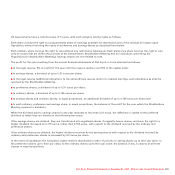 282
282 -
 283
283 -
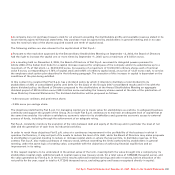 284
284 -
 285
285 -
 286
286 -
 287
287 -
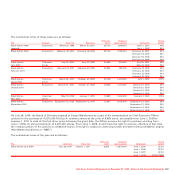 288
288 -
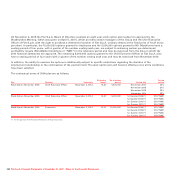 289
289 -
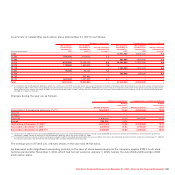 290
290 -
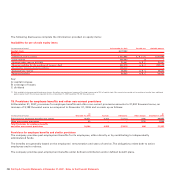 291
291 -
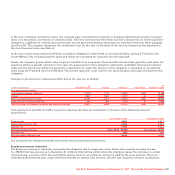 292
292 -
 293
293 -
 294
294 -
 295
295 -
 296
296 -
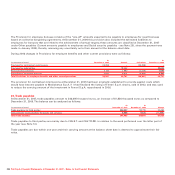 297
297 -
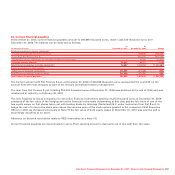 298
298 -
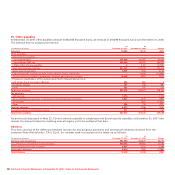 299
299 -
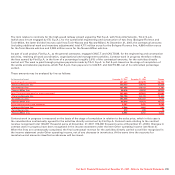 300
300 -
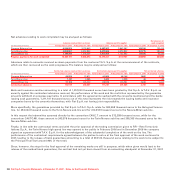 301
301 -
 302
302 -
 303
303 -
 304
304 -
 305
305 -
 306
306 -
 307
307 -
 308
308 -
 309
309 -
 310
310 -
 311
311 -
 312
312 -
 313
313 -
 314
314 -
 315
315 -
 316
316 -
 317
317 -
 318
318 -
 319
319 -
 320
320 -
 321
321 -
 322
322 -
 323
323 -
 324
324 -
 325
325 -
 326
326 -
 327
327 -
 328
328 -
 329
329 -
 330
330 -
 331
331 -
 332
332 -
 333
333 -
 334
334 -
 335
335 -
 336
336 -
 337
337 -
 338
338 -
 339
339 -
 340
340 -
 341
341
 |
 |

In the case of defined contribution plans, the company pays contributions to publicly or privately administered pension insurance
plans on a mandatory, contractual or voluntary basis. Once the contributions have been paid the company has no further payment
obligations. Liabilities for contributions accrued but not yet paid at the balance sheet date are included in the item Other payables
(see Note 25). The company recognises the contribution cost for the year on the basis of the service rendered by the employee in
the item Personnel costs (see Note 5).
In the case of post-employment benefits the company’s obligation is determined on an actuarial basis, using the Projected Unit
Credit Method. Any resulting actuarial gains and losses are accounted for using the corridor approach.
Finally, the company grants certain other long-term benefits to its employees; these benefits include those generally paid when the
employee attains a specific seniority. In this case, the measurement of the obligation reflects the probability that payment will be
made and the period over which the payment is expected to be made. The amount of this obligation is calculated on an actuarial
basis using the Projected Unit Credit Method. The corridor approach is not used for the actuarial gains and losses arising from this
obligation.
Changes in provisions for employee benefits during the year are as follows:
At At
(in thousands of euros) December 31, 2006 Accruals Utilisations Other changes December 31, 2007
Post-employment benefits:
- Employee severance indemnity 6,716 1,110 (1,308) (354) 6,164
- Other 9,851 2,890 (567) 89 12,263
Total post-employment benefits 16,567 4,000 (1,875) (265) 18,427
Other long-term employee benefits 1,504 263 (176) 19 1,610
Total Provisions for employee benefits and similar provisions 18,071 4,263 (2,051) (246) 20,037
Post-employment benefits and Other long-term employee benefits are calculated on the basis of the following actuarial
assumptions:
At December 31, 2007 At December 31, 2006
Discount rate 4.66% 3.93%
Future salary increase rate 2.94% 4.28%
Inflation rate 2.00% 2.00%
Theoretical retirement age Years: 60 (F) - 65 (M) Years: 60 (F) - 65 (M)
Mortality rate SI02 SI99
Average annual departure rate 9.30% 9.79%
The provisions for employee benefits and similar may be summarised as follows:
Employee severance indemnity
The Employee severance indemnity represents the obligation due to employees under Italian law (recently amended by Law
no. 296/06) that has accrued up to December 31, 2006 and that will be settled when the employee leaves the company. In certain
circumstances, a portion of the accrued liability may be given to an employee during his working life as an advance. This is an
unfunded defined benefit plan, under which the benefits are almost fully accrued, with the sole exception of future revaluations.
Fiat S.p.A. Financial Statements at December 31, 2007 - Notes to the Financial Statements 291
